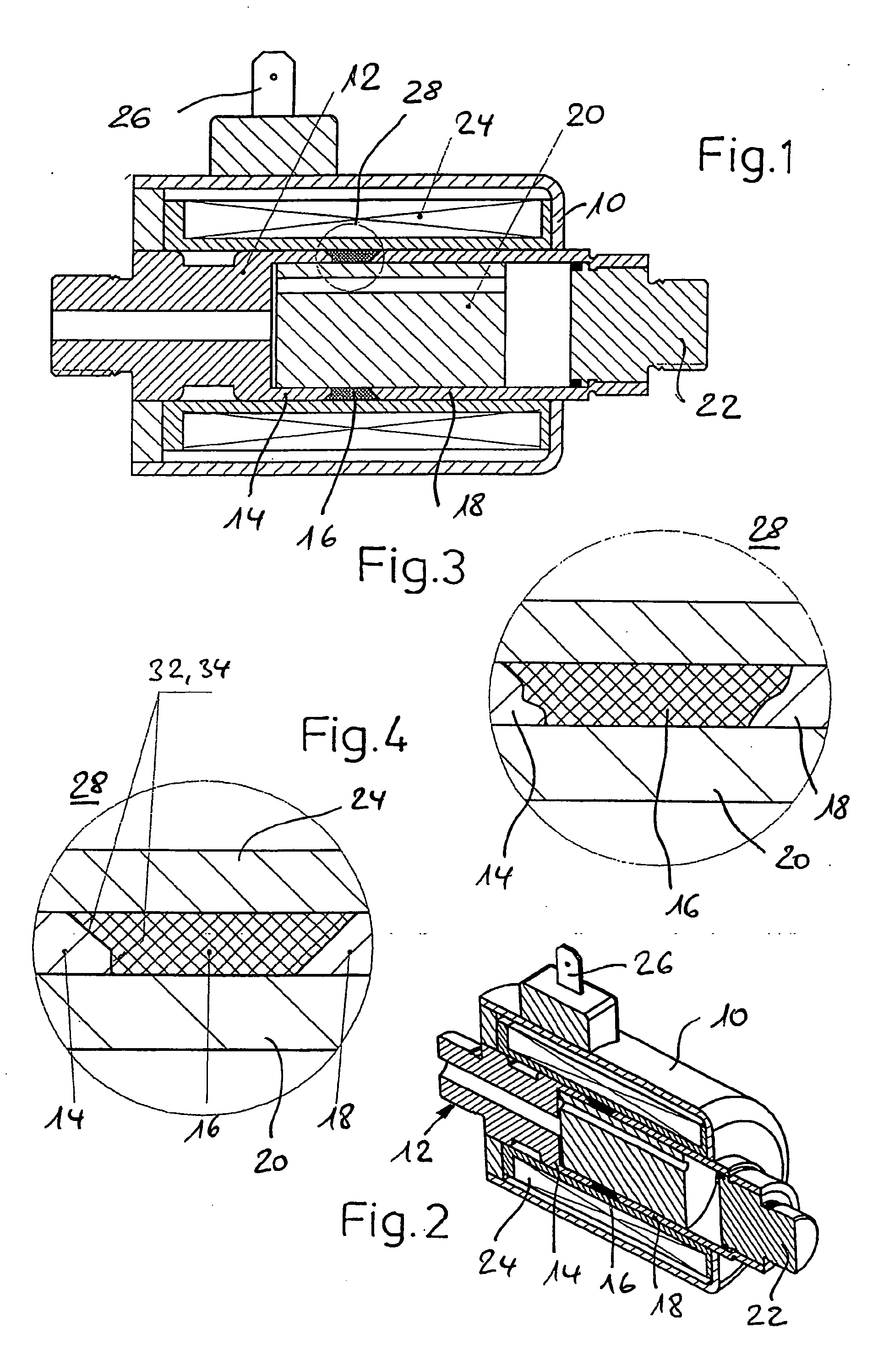Electromagnetic actuating device
a technology of actuating device and actuating chamber, which is applied in the direction of braking system, electric welding apparatus, and electromagnet, etc., can solve the problems of unfavorable geometric profile deformation, and increasing the number so as to reduce the risk of lack of sealing, reduce the risk of cavities and pores, and reliable and mechanical stability
- Summary
- Abstract
- Description
- Claims
- Application Information
AI Technical Summary
Benefits of technology
Problems solved by technology
Method used
Image
Examples
Embodiment Construction
[0031] Based on the schematic representation described above of an electromagnetic actuator as shown in FIG. 1, FIG. 2 and the problems of deformation of the (in this case originally frustoconical) core and yoke geometry following application of the intermediate section 16 by hard facing welding (build-up welding), FIG. 4 shows, analogously to the diagram in FIG. 3, that as a result of the friction welding method the core-side frustoconical geometry comprising frustoconical section 32 and flat annular section 34 and the pure frustoconical shape of the yoke section 18 remain virtually non-deformed and thus unchanged, and thus the originally determined magnetic properties predefined by the frustoconical shape are fully retained. (In FIG. 4, the frustoconical profile of section 32 merges in a truncated manner into the flat annular section 34, which lies in a plane perpendicular to the axial direction.)
[0032] Specifically, in the example of embodiment shown, the core 14 was rotated at ...
PUM
| Property | Measurement | Unit |
|---|---|---|
| Pressure | aaaaa | aaaaa |
| Pressure | aaaaa | aaaaa |
| Pressure | aaaaa | aaaaa |
Abstract
Description
Claims
Application Information
 Login to View More
Login to View More - R&D
- Intellectual Property
- Life Sciences
- Materials
- Tech Scout
- Unparalleled Data Quality
- Higher Quality Content
- 60% Fewer Hallucinations
Browse by: Latest US Patents, China's latest patents, Technical Efficacy Thesaurus, Application Domain, Technology Topic, Popular Technical Reports.
© 2025 PatSnap. All rights reserved.Legal|Privacy policy|Modern Slavery Act Transparency Statement|Sitemap|About US| Contact US: help@patsnap.com



